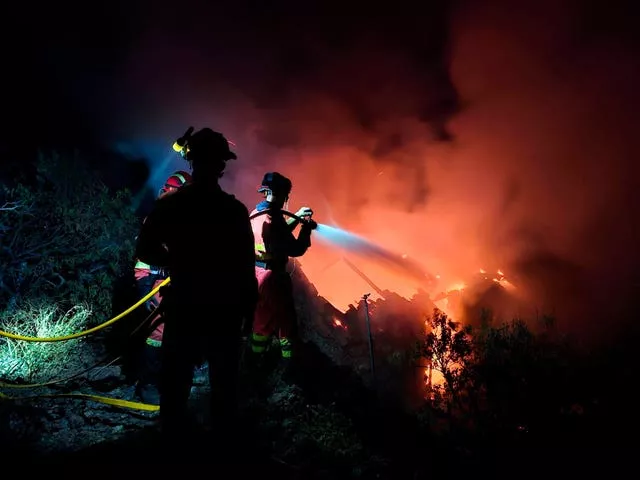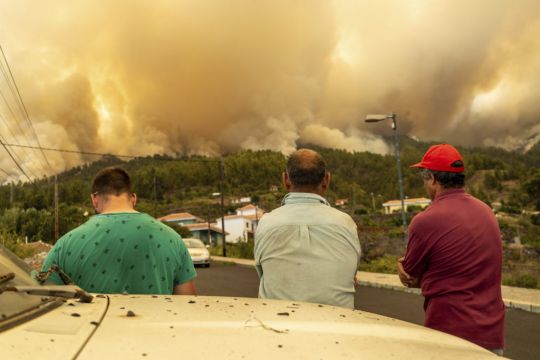Spanish authorities said on Sunday more favourable weather conditions have helped firefighters slow down the advance of a wildfire on La Palma in Spain’s Canary Islands that has forced the evacuation of more than 4,000 residents.
The blaze, which started on Saturday, has affected an area of about 4,600 hectares (11,300 acres) and burned some 20 houses and buildings.
Authorities urged people not to go near the area on the north-west side of the island.
Tourism Minister Hector Gomez told reporters that thanks to the efforts to combat the blaze overnight, the outlook for bringing it under control had improved.
More than 300 firefighters have been deployed and nine water-carrying helicopters and two planes are being used to try to extinguish the fire.
A further 86 members of the army’s Military Emergency Unit were flown to the island on Sunday.

The fire coincides with a heatwave that is hitting southern Europe.
Temperatures in the Canary Islands, located off the north-west coast of Africa, soared last week as Spain experienced a second summer heat wave.
The weather has cooled a little since Friday but the country is expected to suffer another heat wave this week.
Vicente Rodriguez, mayor of Puntagorda town close to where the fire started, said on Saturday that the area has seen below-average rainfall in recent years, just like large parts of the drought-stricken mainland Spain, because of changing weather patterns impacted by climate change.
The drought has left the wooded, hilly terrain tinder-dry.
The wildfire and evacuations come nearly two years after a three-month volcanic eruption caused devastation on La Palma. While nobody was killed, around 3,000 buildings were buried along with many banana plantations, roads and irrigation systems.
Spain saw record high temperatures in 2022 and this spring as it endures a prolonged drought.
Authorities and forestry experts are concerned that the conditions are ripe for a difficult wildfire campaign after seeing virulent fires as early as March.







